Hadrian’s Wall (Vallum Aulium) was a defensive fortification in Roman Britain, running for 73 miles (116km) from Mais at the Solway Firth on the Irish Sea, to the banks of the River Tyne at Segedunum at Wallsend in the North Sea.
Construction began along the route of the Stanegate Road in AD 122 and was completed in just seven years. 16 Stone Forts were built every five Roman miles (a Roman mile is a thousand paces), and in-between were 80 milecastles, numerous turrets, 6 supply forts, and an earthwork erected south of the wall known as the Vallum.
Whether this would have deterred a threat from the northern tribes invading from Caledonia is unknown, parts of Caledonia had previously been annexed with the construction of the Gask Ridge around AD 70-80 and in AD 84, an army of 30,000 Caledonian warriors faced off against a 20,000 strong Roman invasion force led by General Gnaeus Julius Agricola at the Battle of Mons Graupius. According to the Roman historian Publius Cornelius Tacitus, 10,000 Caledonian lives were lost at the cost of only a fanciful 360 Roman auxiliary troops.
This resulted in the proclamation that Agricola had finally subdued resistance to Roman rule across all the territories of Britannia including Caledonia. A brief period of “Romanisation” now occurred as the lowland territories of Caledonia saw a series of construction projects, roads and infrastructure that would have been the foundation of a new Roman province.
It is likely that Rome had intended to continue campaigning and expand the borders of Britannia from coast to coast, but Rome recalled Agricola and further military requirements elsewhere in the empire necessitated a troop withdrawal.
The construction of the wall would never have prevented an invading army from the north, rather it might have curbed raiders and provide a means of immigration control and customs. However, it is argued that building a garrisoned wall and forts over a stretch of 73 miles to stop small-scale raiding, not to mention the economic viability makes the argument somewhat dubious.
In the years that followed Hadrian’s death in AD 138, Emperor Antoninus Pius begun expanding Rome’s ambitions into Caledonia yet again and constructed a new wall in AD 142. Called the Antonine Wall, the fortification was built from turf with a palisade and ran across the central belt of Scotland between the Firth of Forth and the Firth of Clyde.
The Romans retreated to Hadrian’s Wall a decade later but reoccupied the Antonine wall temporarily in AD 208 under the orders of Emperor Septimius Severus (this has led to the wall also being referred also as the Severan Wall).
By AD 410, Britannia was suffering raids by the Scoti, Saxons, and Picts and Roman rule was coming to an end. Some archaeological evidence suggests that some parts of the wall remained occupied into the 5th century, but without a central administration or the Legions to maintain the massive defences, Hadrian’s Wall would fall into ruin and become abandoned.
The Forts of Hadrian’s Wall (West to East)
Mais – Hadrian’s Wall
The Fort at Mais was constructed in the modern-day village of Bowness-on-Solway in Cumbria and was the most westerly of all the Forts on Hadrian’s Wall. The name “Mais” translates as “The Larger” and was the second-largest fort, covering an area of around 7 acres. The Fort was originally built from turf with a clay rampart and was situated on a sea-cliff with commanding views over the Solway Firth.
A civilian settlement, or vicus, existed south of the fort lining the road to the fort at Kirkbride, and this was occupied well into the fourth century. Little is known of the garrison, but its third-century commander was a tribune, indicating that it was probably a thousand-strong (military) cohort of infantry, perhaps part-mounted.

Coggabata – Hadrian’s Wall
Coggabata or Congavata was constructed in the modern-day village of Drumburgh in Cumbria and was built on a small hill to guard the southern end of two important Solway fords, the Stonewath and the Sandwath. The fort was oblong in shape, covering an area of 2 acres and had been built within the remains of a slightly larger fort whose clay ramparts had been leveled.
The Notitia Dignitatum (a document of the late Roman Empire) states that the fort was garrisoned by the Second Cohort of Lingones.
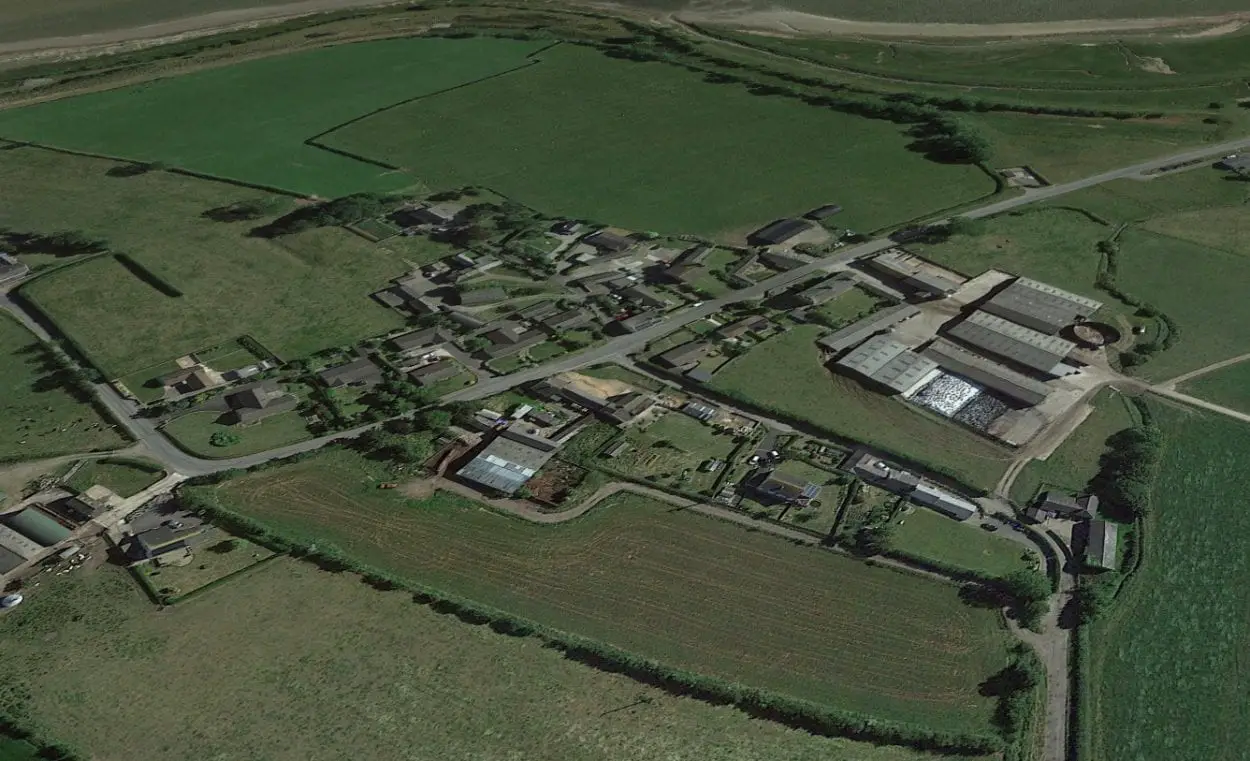
Aballava – Hadrian’s Wall
Aballava or Aballaba was constructed in the modern-day village of Burgh by Sands and was also built to guard the Solway fords, the Sandwath and also the Peat Wath. The fort was oblong in shape, covering an area of 5 acres and had been built on the remains of two previous forts. To the south-west was a vicus, but this may have been abandoned in the later 2nd or 3rd century.
The fort was garrisoned by the Ala I Tungrorum, followed by a mixed cavalry regiment, Cohors I Nerviorum. In the third-century the fort was garrisoned by a mounted detachment (cuneus) of Frisians, followed by an infantry detachment (numerus) of Aurelian Moors (Morocco).
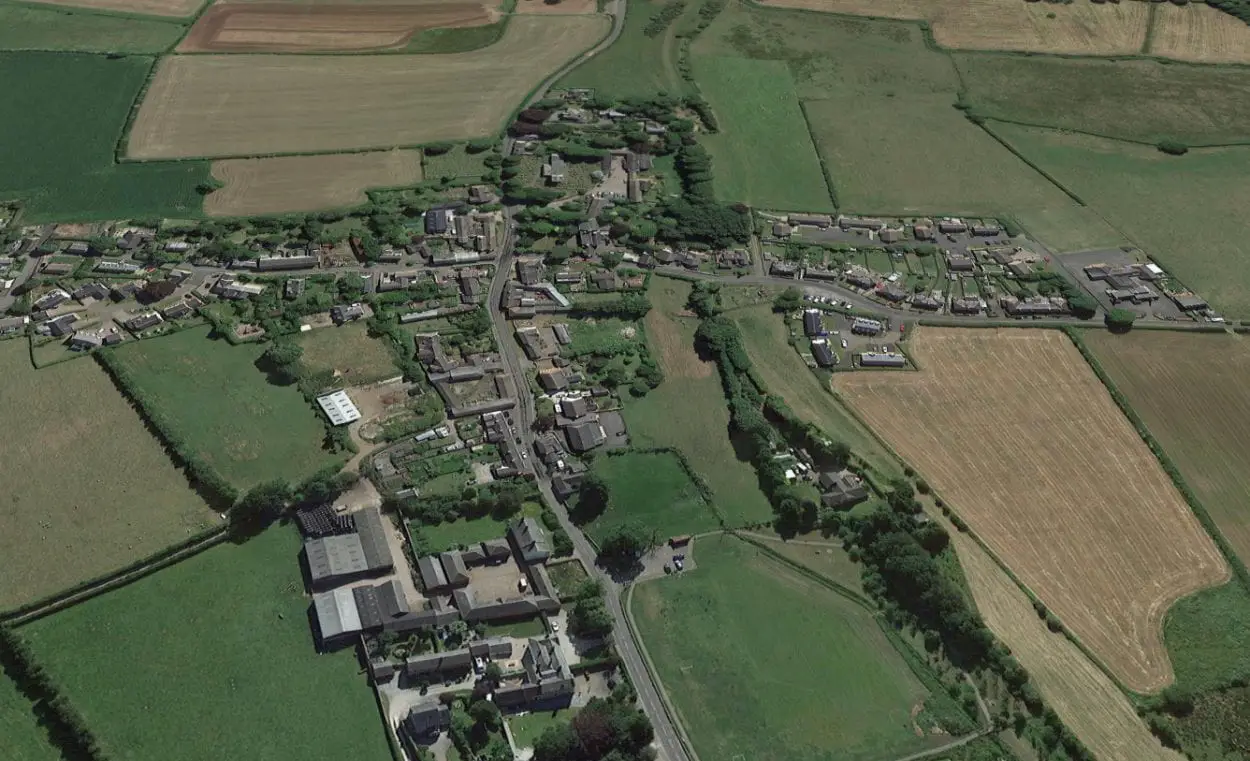
Uxelodunum – Hadrian’s Wall
Uxelodunum or Petriana was constructed in what is now Stanwix, a district north of Carlisle. Uxelodunum was the largest fort on Hadrian’s Wall, covering an area of 9.32 acres and was built to guard the Eden bridgehead and the western route to and from Caledonia.
The fort was garrisoned by the Ala Petriana, an auxiliary regiment whose soldiers had been made Roman citizens for valour on the field of battle.

Camboglanna – Hadrian’s Wall
Camboglanna was constructed at what is now Castlesteads House and resides under woodland near the modern-day village of Newton in Cumbria. Camboglanna was square in design covering an area of 3.75 acres and was built to guard an important approach to the Wall and also watch the east bank of the Cambeck.
In the 2nd century the ford was garrisoned by the First Cohort of Bataviansm followed by the Cohors IV Gallorum equitata, then in the 3rd century, the Cohors II Tungrorum.

Banna – Hadrian’s Wall
Banna, now known as Birdoswald Roman Fort was constructed on a former farm called Birdoswald near the modern-day village of Gilsland. Banna was rectangular in design covering an area of 4 acres and was built on a commanding position on a triangular spur of land bounded by cliffs. Excavations at Banna have uncovered a principia headquarters, granaries, barracks and a basilica exercitatoria.
The fort was garrisoned by auxiliaries from approximately AD 112 to AD 400 and it has been suggested that Banna remained a local powerbase for descendants of the Roman garrison after the end of Roman rule in Britannia.

Magnis – Hadrian’s Wall
Magnis, now known as Carvoran Roman Fort was constructed near the modern-day village of Greenhead in Northumberland and is now the site of the Roman Army Museum. Magnis was rectangular in design, covering an area of 3.7 acres and was built to guard the junction of the Maiden Way with the Stanegate.
The fort was garrisoned by the First Cohort of Batavians, consisting of both cavalry and infantry that was traditionally recruited from Western Germany. In AD 130 the regiment was relocated to Castlesteads (Camboglanna) and replaced with the First Cohort of Hamian Archers from Syria.

Aesica – Hadrian’s Wall
Aesica, also called Great Chesters was constructed near the modern-day town of Haltwhistle in Northumberland. Aesica was oblong in design, covering an area of 3 acres and was built to guard Caw Gap, where the Haltwhistle Burn crosses Hadrian’s Wall.
The fort was garrisoned by the Sixth Cohort of Nervians in the 2nd century, followed by the Sixth Cohort of Raetians, then in the 3rd century the Second Cohort of Asturians with a detachment of Raeti Gaeseti.
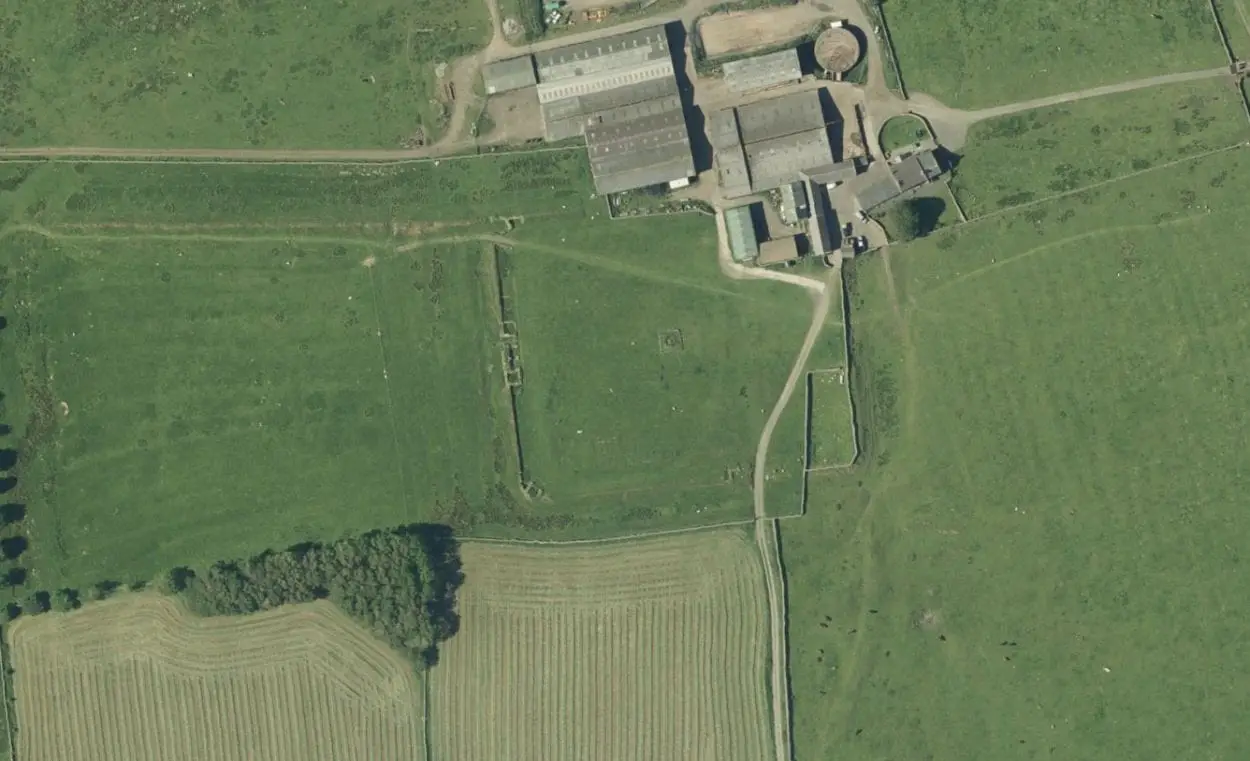
Vercovicium – Hadrian’s Wall
Vercovicium, now known as Housesteads Roman Fort was constructed on the former site of Housesteads Farm, north of the modern-day civil parish of Bardon Mill in Northumberland. Vercovicium was rectangular in design, covering an area of 5 acres and was built on a prominent crest of the Whin Sill escarpment. To the south of the fort, a large vicus (civilian settlement) was established that was abandoned by AD 320.
The fort was garrisoned by an auxiliary infantry cohort and a detachment of legionaries from Legio II Augusta in the 2nd century. In the 3rd century, the garrison comprised of Cohors I Tungrorum, augmented by the numerus Hnaudifridi and the Cuneus Frisiorum.

Brocolitia – Hadrian’s Wall
Brocolitia, also known as Procolita was constructed north of the modern-day village of Newbrough in Northumberland. Brocolitia was rectangular in design, covering an area of 3½ acres and was built a mile or so west of the Wall’s northernmost point at Limestone Corner, and just over a mile west of the nearest milecastle, Milecastle 30.
Excavations have found the remains of three sanctuaries beyond the fort’s south-west corner, in addition, are the remains of an early 3rd century mithraeum, a cult temple of the Roman god Mithras. The fort was garrisoned by the First Cohort of Aquitani and the Cohors, Cugernorum in the 2nd century, then possibly the First Cohort of Batavians until the fort was abandoned.
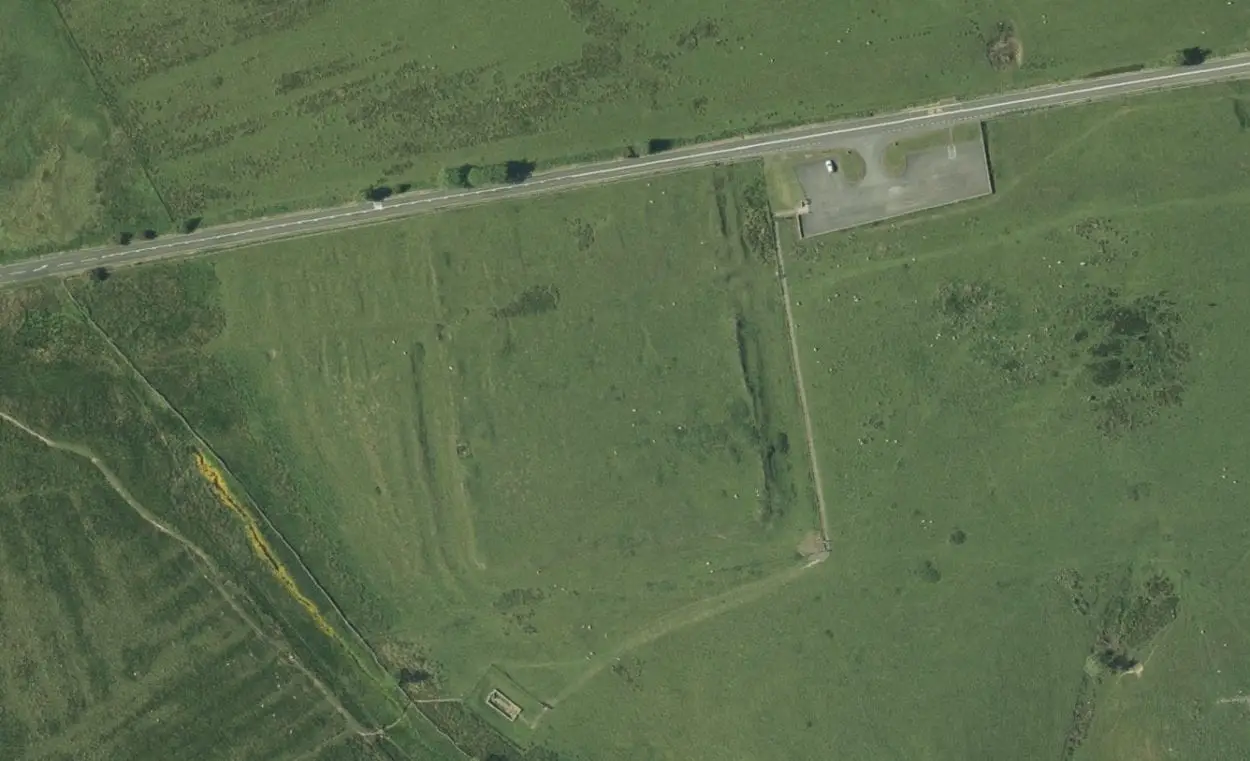
Cilurnum – Hadrian’s Wall
Cilurnum, also know as Cilurvum or Chesters Roman Fort was built near the modern-day village of Walwick in Northumberland. Cilurnum was rectangular in design, covering an area of 2.1 acres and was built to guard Chesters Bridge which carried the Military Way Roman road behind the wall across the River North Tyne.
To the south of the fort are the remains of a vicus, a civilian settlement that has been identified through aerial photography. The fort was garrisoned by Roman calvary evident by the discovery of descriptions that name the Cohors Derlmatarum from Bosnia-Herzegovina and the Cohors Vangionum from Germany.

Hunnum – Hadrian’s Wall
Hunnum, also known as Onnum was built near the modern-day village of Halton, Northumberland. Hunnum was oblong in design, but later extensions to the fort have given Hunnum an L-shaped appearance. Hunnum covers an area of 4.8 acres and was built to guard Dere Street as it crosses Hadrian’s Wall.
The fort was garrisoned by a cohort of partly mounted troops. In the third century, it held a regiment of cavalry, the Ala I Pannoniorum Sabiniana, also called Ala Sabiniana.
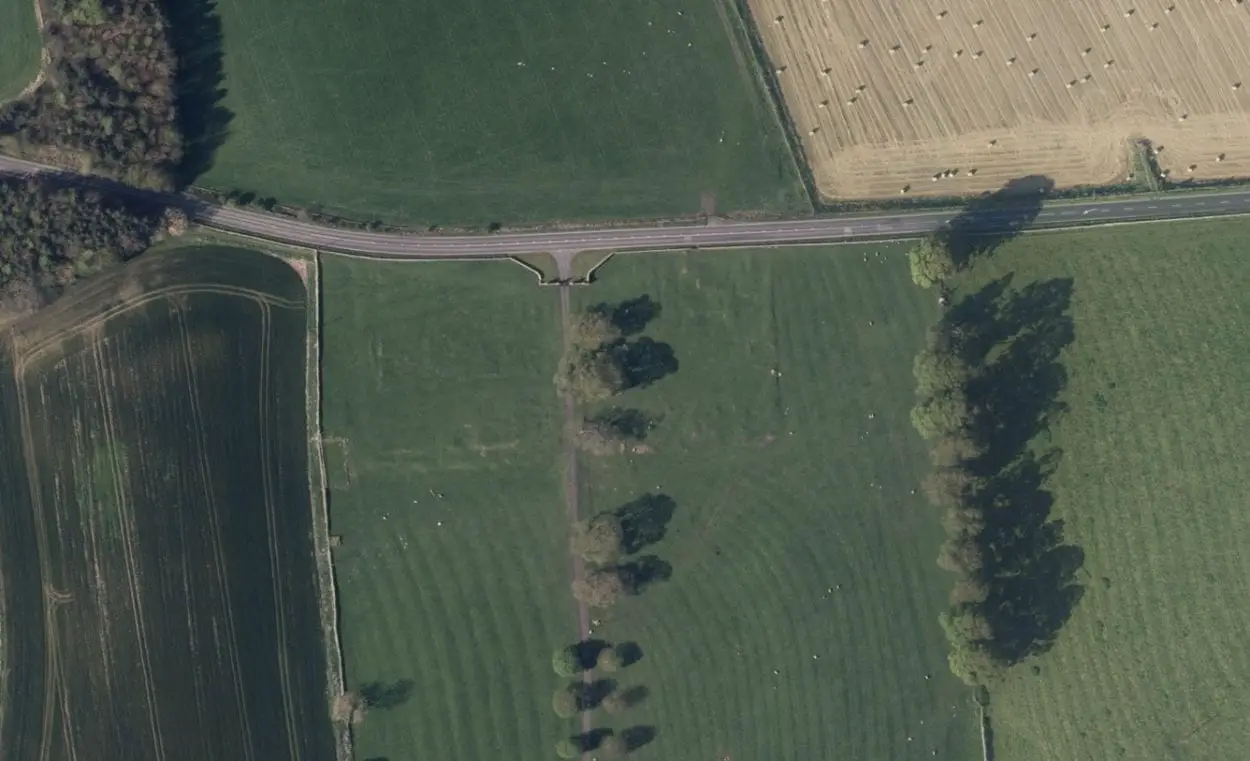
Vindobala – Hadrian’s Wall
Vindobala was built near the modern-day hamlet of Rudchester in Northumberland. Vindobala is oblong in design, covering an area of 4.5 acres and was built to guard the valley of the March Burn to the west, an ancient route leading to the south towards the Tyne ford at Newburn.
The fort was garrisoned in the 4th century by the First Cohort of Frisiavones, a coastal tribe of Lower Germany.

Condercum – Hadrian’s Wall
Condercum was built in modern-day Benwell, a suburb of Newcastle upon Tyne. Condercum covers an area of 5.5 acres and was probably built to defend the Benwell Vallum Crossing. Excavations have uncovered a commandant’s house, headquarters, two granaries, workshops, barracks, stables, a vicus and a hospital.
The fort was garrisoned in the 2nd century by the 1st cohort of Vangiones, then in the 3rd and 4th centuries by the 1st Cavalry Regiment of Asturians.
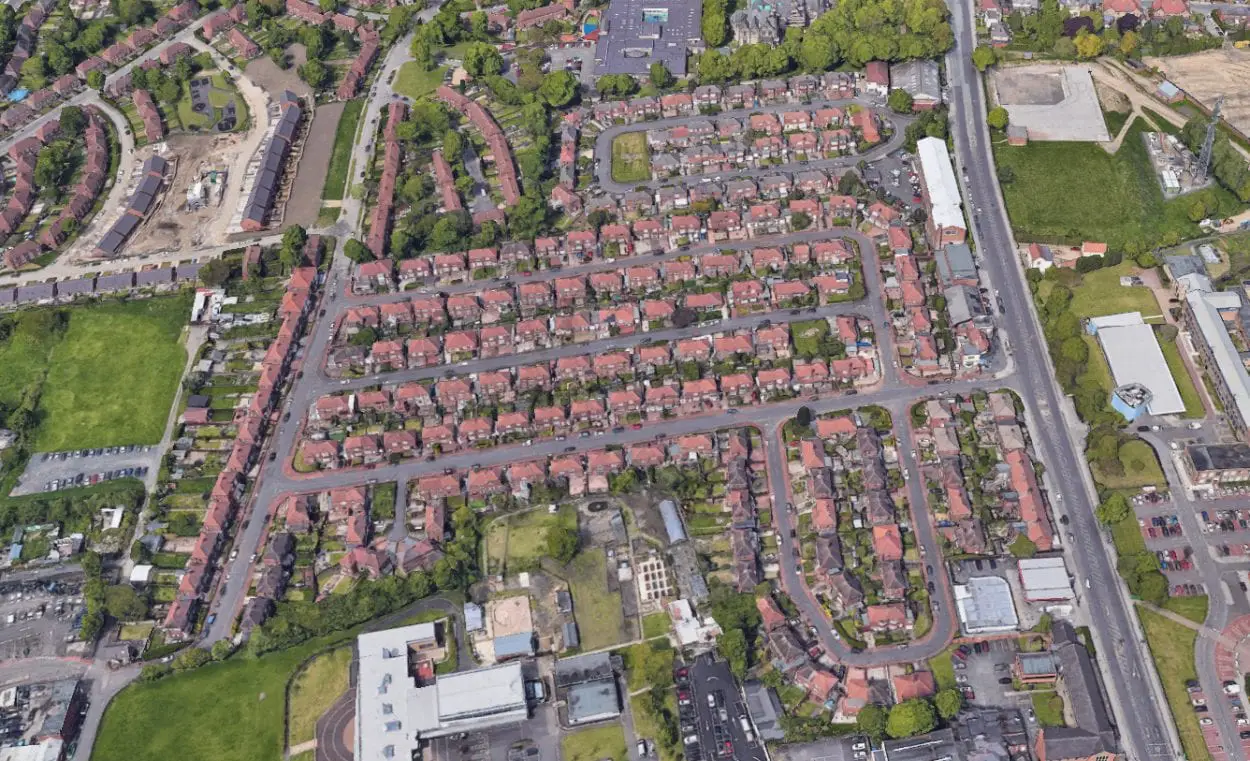
Pons Aelius – Hadrian’s Wall
Pons Aelius, also called Newcastle Roman Fort was built in the modern-day city of Newcastle upon Tyne and is now occupied by the “Castle”, a medieval fortification. Pons Aelius was rectangular in shape, covering an area of 1.53 acres and was built to defend a river crossing.
The fort was garrisoned by Legio VI along with the II Augusta and XX Valeria. A dedication to Hadrian’s mother, Domitia Paulina, attests the presence of the Cohors Ulpia Traiana Cugernorum civium Romanorum at the beginning of the 3rd century.

Segedunum – Hadrian’s Wall
Segedunum was built in the modern-day town of Wallsend, Tyne and Wear and marks the easternmost portion of Hadrian’s Wall. Segedunum is rectangular in size, covering an area of 4.1 acres and was built to guard the eastern approach to the wall.
There is evidence that there was an extensive vicus surrounding the fort, including the area to the north of the wall. The fort was garrisoned in the 2nd century by the Cohors II Nerviorum, then in the 3rd and 4th centuries by the Cohort of the Lingones.
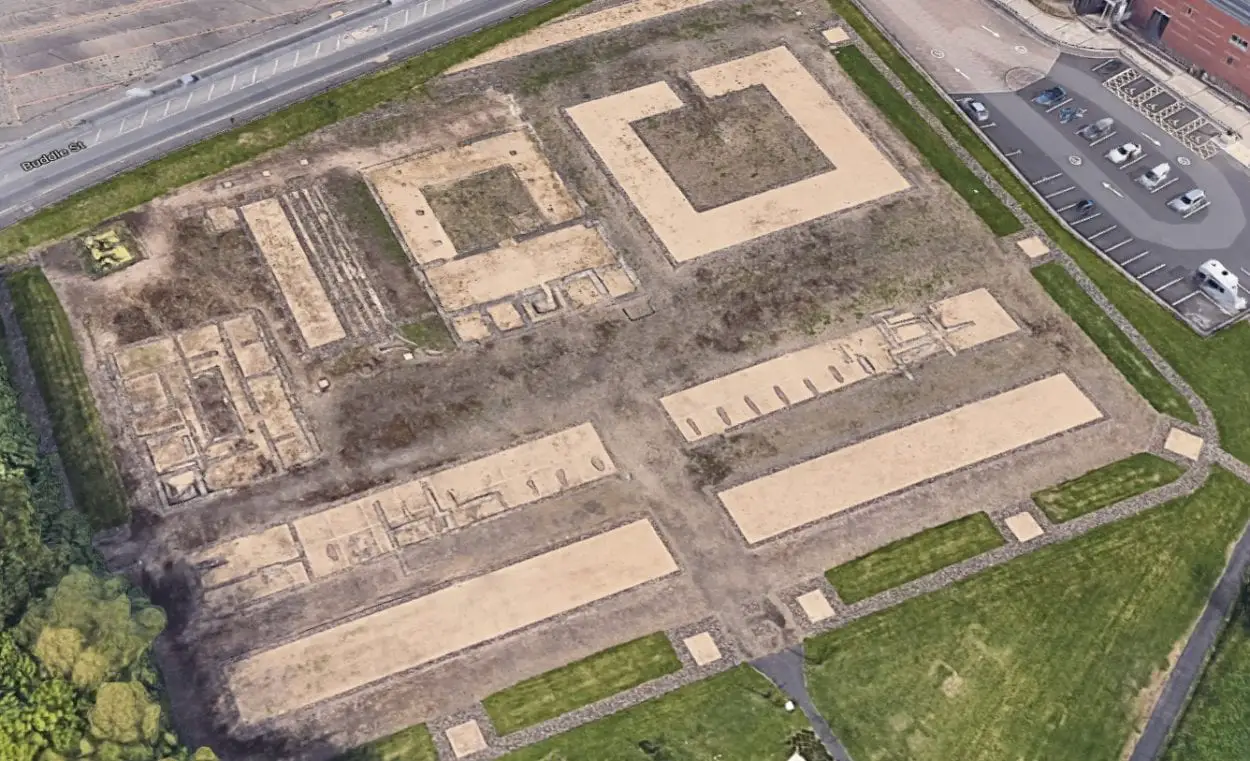
Alauna – Supply Fort
Alauna was a coastal fort, located just north of the modern-day town of Maryport in the county of Cumbria. Alauna was square in size, covering an area of 6 acres and was built to function as a supply base for Hadrian’s Wall.
Geo-magnetic surveys have revealed a large Roman vicus that encircled the fort and possibly an entrepôt (harbour). The fort was garrisoned by the Cohors III Nerviorum.

Arbeia – Supply Fort
Arbeia was built in the modern-day town of South Shields in Tyne & Wear. Arbeia was constructed on Lawe Top, overlooking the mouth of the River Tyne to serve as a supply base for Hadrian’s Wall.
The fort is rectangular in design and was garrisoned by a squadron of Mesopotamian boatmen and the First Asturian cavalry.
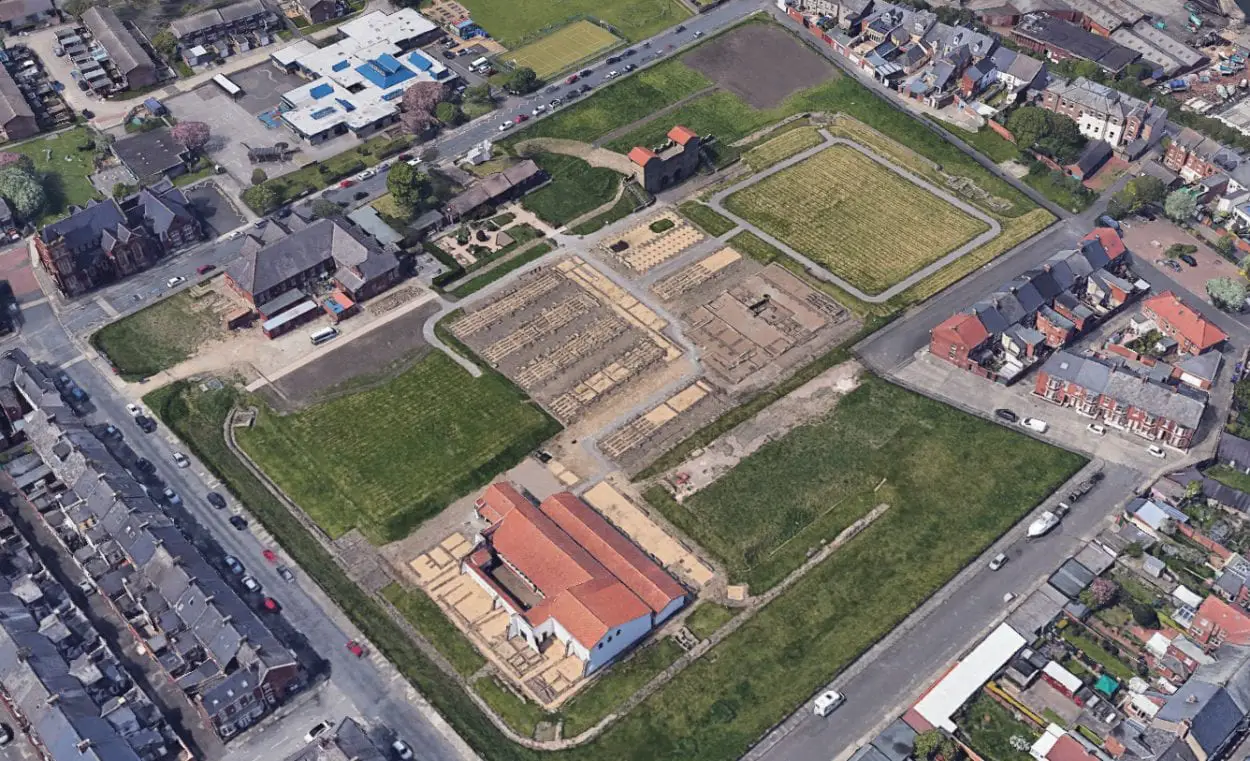
Coria – Supply Fort
Coria, also known as Corchester was constructed in the modern-day village of Corbridge at an intersection of Roman roads, where Dere Street bridged the River Tyne and met the Stanegate.
Coria was built to serve as a supply base for Hadrian’s Wall, but in the early AD 160s the function of Corbridge suddenly changed to that of a base for legionaries. By the 3rd century, the fort had grown into a large vicus or possibly the capital of a self-governing administrative division or civitas.
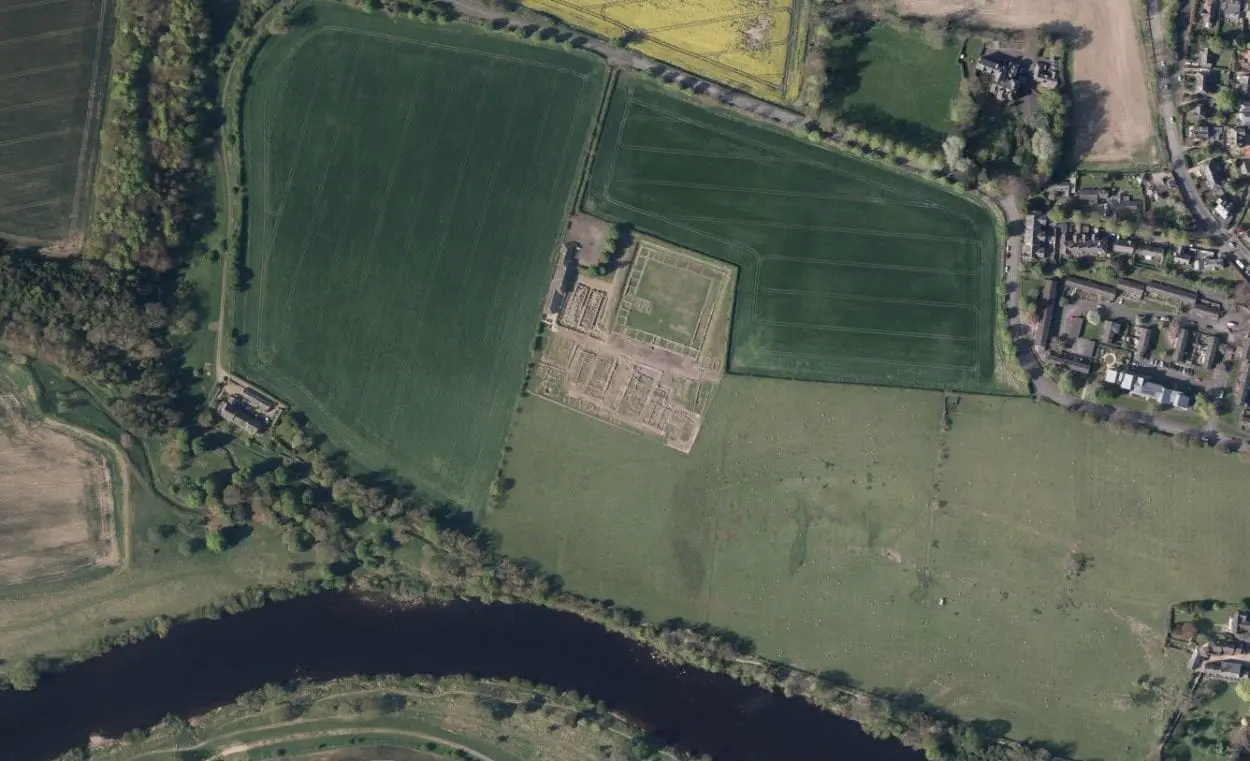
Epiacum – Supply Fort
Epiacum, also known as Whitley Castle was constructed north of the modern-day town of Alston in Cumbria. Epiacum is lozenge-shaped in design, covering an area of 4 acres and served as a supply fort to Hadrian’s Wall.
The fort was possibly garrisoned by the Legio VI Victrix and the 2nd Cohort of Nervians.

Vindolanda – Supply Fort
Vindolanda was constructed near the modern-day village of Bardon Mill in Northumberland. The fort was built to guard the Stanegate and to serve as a supply base to Hadrian’s Wall.
Vindolanda is rectangular in design covering an area of 15 acres and was garrisoned by an infantry or cavalry auxilia, then the Cohors IV Gallorum equitata, also known as the Fourth Cohort of Gauls.

Vindomora – Supply Fort
Vindomora, also called Ebchester Roman Fort was constructed in the modern-day village of Ebchester in County Durham. Vindomora was built to serve as a supply base for Hadrian’s Wall and to protect Dere street, the main Roman road linking Eboracum (York) with Hadrian’s Wall. The fort was garrisoned by the Cohors Quartae Breucorum Antoninianae.
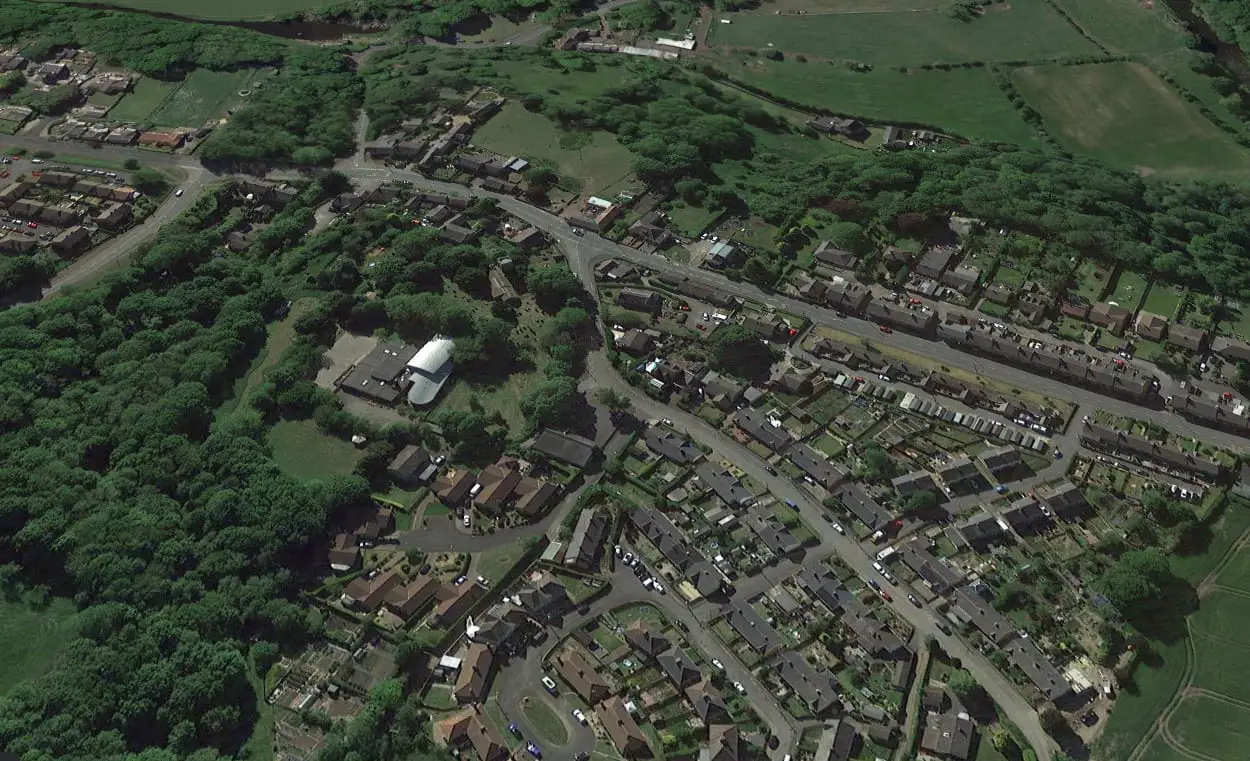
Header Image Credit – Public Domain







